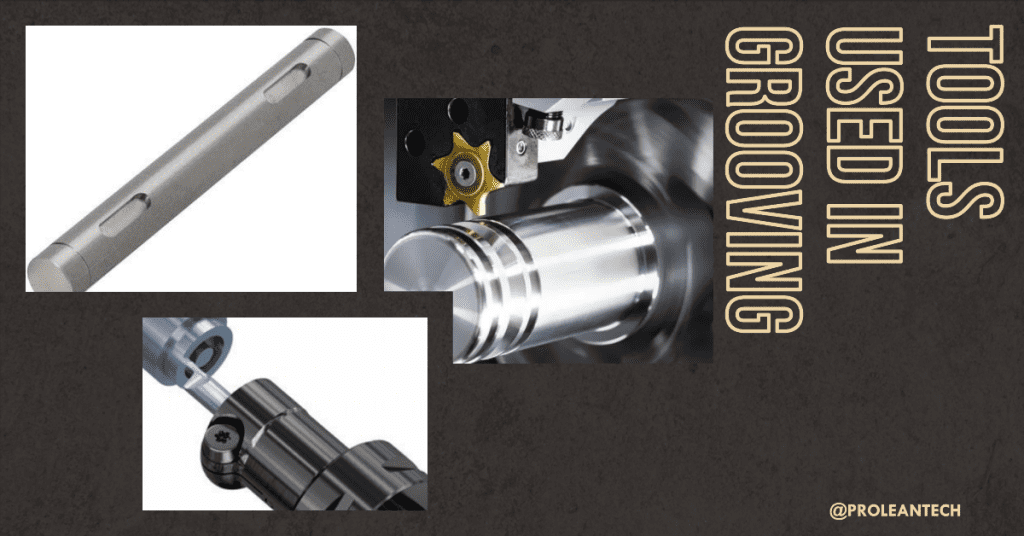
Grooving operations hold a crucial place in the world of machining. As a subtractive manufacturing process, grooving involves removing material from a workpiece to create grooves of a specific width and depth. The tools employed in grooving operations are designed to deliver precision and quality, meeting the most stringent dimensional requirements.
This article explores the tools used in grooving operations and the processes involved, from design and planning to quality inspection.
Related blogs: A Detailed Comparison: Additive VS. Subtractive Manufacturing
Types of Grooving Tools
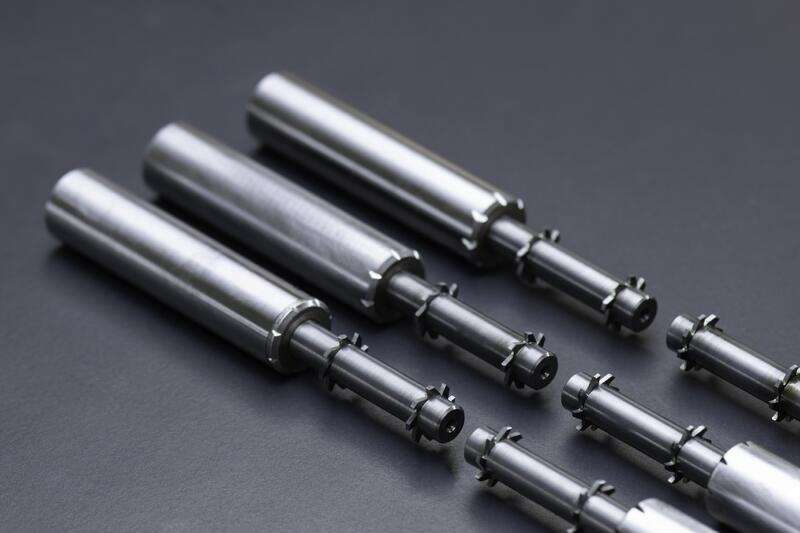
Grooving tools
Grooving tools can be categorized based on several different criteria. These include:
- Type of Groove: Tools can be classified based on the kind of groove they create—for example, straight grooving tools, full radius grooving tools, thread grooving tools, etc.
- Application Area: Tools can be categorized based on where they are applied to the workpiece. For instance, internal grooving tools are used for creating grooves within the workpiece, external grooving tools for creating grooves on the outer surface, and face grooving tools for grooving on the face of a workpiece.
- Function: Some grooving tools serve multiple functions. For example, groove and turn tools can perform both grooving and turning operations and grooving and cut-off tools can perform both grooving and cutting operations.
- Material Compatibility: Tools can be classified based on the type of material they are suited for. Some tools are designed for use with harder materials like steel, while others might be designed for softer materials like aluminum.
- Size: Grooving tools come in different sizes to create grooves of varying widths and depths.
These categories can overlap, and a single tool can fit into multiple categories. The optimal tool for a job will depend on the specific requirements of that job.
10 Common CNC Grooving Tools

Face grooving tool
The following is a detailed exploration of ten common CNC grooving tools, each with their unique characteristics and applications.
1. Straight Grooving Tools
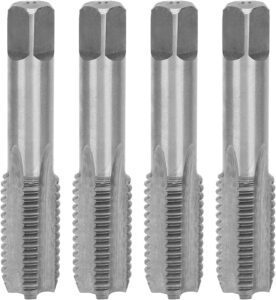
Straight grooving tools are designed for creating linear grooves in a workpiece. They are commonly used for external and internal grooving tasks. The tip of the tool is designed to match the width and depth of the desired groove.
2. Internal Grooving Tools
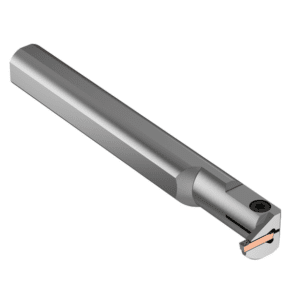
As the name suggests, these tools are designed specifically for internal grooving operations. They have a smaller tip radius that allows for the creation of intricate internal grooves within a workpiece.
3. External Grooving Tools
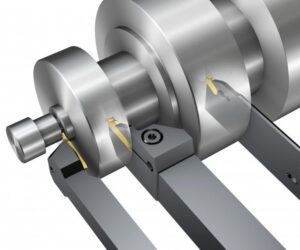
External grooving tools are designed for creating grooves on the outer surface of a workpiece. They have a larger tip radius compared to internal grooving tools, which allows for larger, more pronounced grooves.
4. Face Grooving Tools
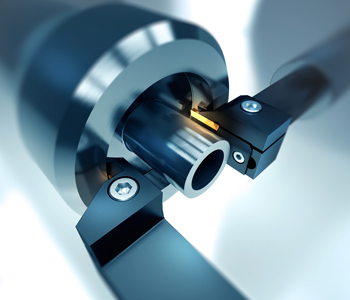
Face grooving tools are specifically designed to create grooves on the face or end of a workpiece. They have a unique design that allows them to access and cut the workpiece’s face.
5. Parting Tools
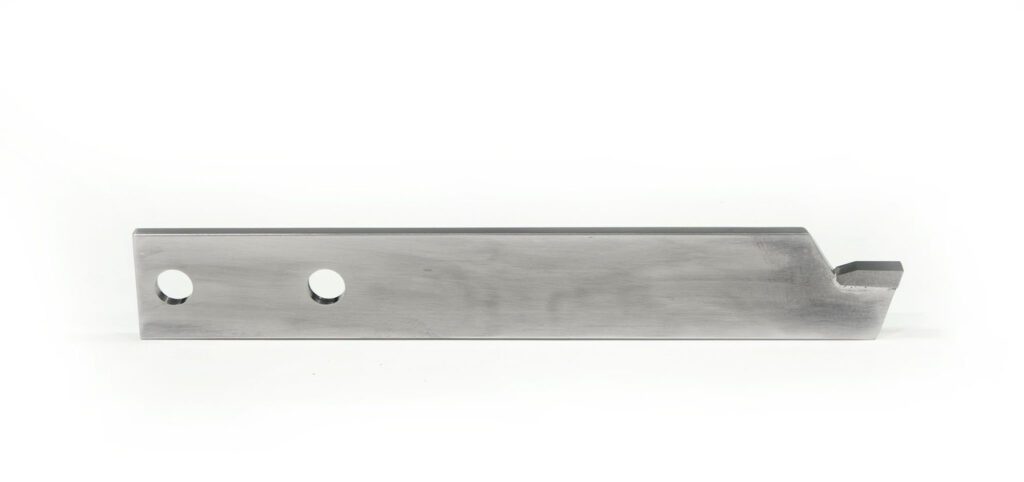
Also known as part-off tools, parting tools are used to cut off a piece of a workpiece during grooving. They are incredibly sharp and thin, enabling them to make precise cuts without causing deformation to the material.
6. Undercut Grooving Tools
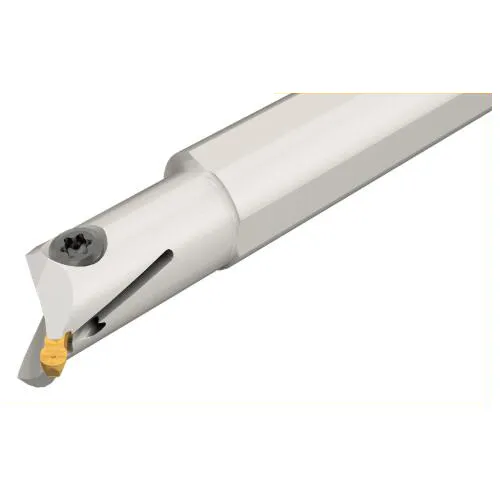
Undercut grooving tools are designed to create undercuts or recesses in a workpiece. These tools have a specific shape that allows them to cut into the workpiece and create a space beneath the surface level.
7. Radius Grooving Tools
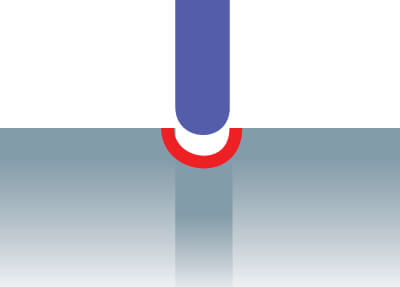
Full-radius grooving tools are used when a full-radius groove is required in a workpiece. The cutting edge of the tool has a semicircular shape that matches the desired groove radius.
8. Thread Grooving Tools
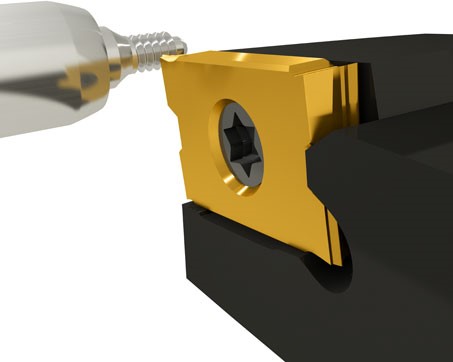
Thread grooving tools are used to create thread-like grooves in a workpiece. They have a unique design that allows them to cut a helical groove in the workpiece to form threads.
9. Groove and Turn Tools
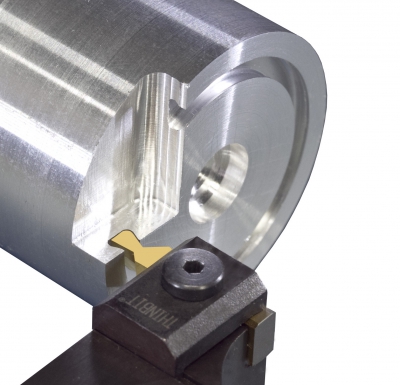
Groove and turn tools are dual-purpose tools that can be used to create grooves and perform turning operations. They are versatile tools that help reduce tool changes during the machining process.
10. Grooving and Cut-Off Tools
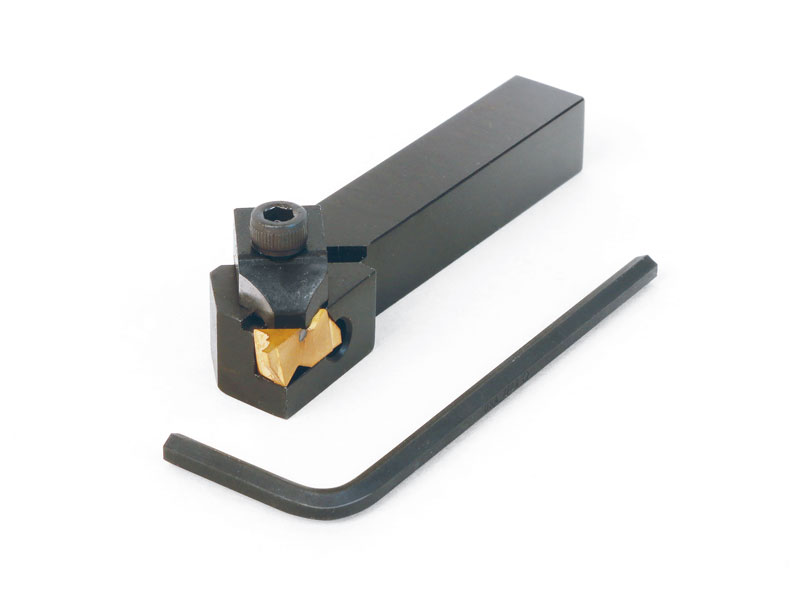
Grooving and cut-off tools are multipurpose tools that can perform both grooving and cutting operations. They are advantageous when both operations need to be performed on the same workpiece, reducing the need for tool changes and increasing efficiency.
Table 1: 10 Common CNC Grooving Tools and Their Primary Uses
| Tool Type | Primary Use |
|---|---|
| Straight Grooving Tools | Creating linear grooves |
| Internal Grooving Tools | Creating internal grooves |
| External Grooving Tools | Creating external grooves |
| Face Grooving Tools | Grooving on the face of a workpiece |
| Parting Tools | Cutting off parts from the workpiece |
| Undercut Grooving Tools | Creating undercuts or recesses |
| Full Radius Grooving Tools | Creating full radius grooves |
| Thread Grooving Tools | Creating thread-like grooves |
| Groove and Turn Tools | Grooving and turning operations |
| Grooving and Cut-Off Tools | Grooving and cutting operations |
CNC Grooving Tool Material
The selection of the right tool material is as important as choosing the appropriate grooving tool type. The material directly impacts the tool’s performance, durability, and the quality of the grooves it produces. Here’s a closer look at the most commonly used materials for CNC grooving tools:
- High-Speed Steel (HSS): High-speed steel tools are popular for their versatility and affordability. HSS can withstand high temperatures without losing hardness, making it suitable for a wide range of applications. However, compared to more advanced materials, HSS tools may wear faster and need more frequent replacement.
- Carbide: Carbide tools, particularly tungsten carbide, are prized for their high hardness and excellent heat resistance. They can operate at higher cutting speeds than HSS tools, leading to higher productivity. However, carbide tools can be brittle and may break if mishandled or subjected to excessive cutting forces.
- Ceramic: Ceramic tools offer superior heat resistance and hardness compared to carbide and HSS. They allow very high cutting speeds and provide excellent surface finish. However, they are also very brittle and require careful handling. Ceramic tools are often used for hard-turning applications.
- Cubic Boron Nitride (CBN): CBN tools are second only to diamond in hardness. They offer excellent heat resistance and wear resistance, making them suitable for machining hard and abrasive materials like hardened steel or cast iron. CBN tools can be expensive, but their performance often justifies the cost.
- Diamond: Diamond tools offer the highest hardness and heat resistance of any tool material. They’re typically used for machining non-ferrous metals and non-metals like aluminum, copper, and plastics, where their superior wear resistance and low friction can be fully utilized.
Key Considerations When Choosing CNC Grooving Tools
Choosing the right CNC grooving tool is essential for ensuring the quality, accuracy, and efficiency of your machining operations. Here are some key considerations when selecting CNC grooving tools:
- Groove Type: The type of groove you need to machine—whether it’s straight, full radius, or thread—will largely dictate the kind of tool you choose. Make sure your tool is designed to produce the specific groove type you need.
- Material Type: Different materials have different hardness and toughness levels, which can affect tool choice. For example, a tool designed for aluminum might not perform well on stainless steel.
- Tool Material: The tool material should be able to withstand the heat and wear generated during the machining process. Carbide tools, for instance, are popular due to their high wear resistance and ability to withstand high temperatures.
- Tool Geometry: Tool geometry—including tool angles, radius, and shape—affects how the tool interacts with the workpiece. Proper tool geometry can improve surface finish, tool life, and machining speed.
- Size of the Groove: The width and depth of the groove you’re machining will also influence your tool selection. You need to ensure the tool’s cutting edge is of an appropriate size to produce the desired groove.
- Coolant Compatibility: Depending on the material and type of operation, a coolant might be necessary to reduce heat and improve tool life. Ensure your tool is compatible with the type of coolant you plan to use.
- Machine Compatibility: Make sure the tool can be properly mounted and used on your specific CNC machine. Consider factors like tool size, tool holder type, and spindle speed.
- Cost: Cost-effectiveness is always an important consideration. While more expensive tools may offer longer tool life or better performance, they might not always be the most cost-effective choice. Consider the tool cost along with its expected performance and tool life to make an informed decision.
Remember, the right tool can greatly influence the success of your grooving operations. Always consider these factors carefully and consult with tooling experts or manufacturers if needed.
Conclusion
The tools used in grooving options are meticulously designed for precision, and capable of meeting exacting dimensional requirements. The choices available in grooving tools, from the tool type to the material, all serve to enhance the quality of the final product.
The success of a grooving operation doesn’t merely rely on the tools but also on the skill and expertise of the operator. By combining knowledge with experience, you can significantly enhance your operations’ efficiency and quality. To ensure optimal results, consider partnering with industry leaders like Prolean’s Grooving Machining Service, renowned for delivering unparalleled quality and precision.
FAQ’s
What are grooving operations in CNC machining?
Grooving operations in CNC machining are processes where the material is removed from a workpiece to create grooves of a specific width and depth. These grooves can be internal, external, or on the face of the workpiece, depending on the design requirements.
What are some common types of CNC grooving tools?
Common types of CNC grooving tools include straight grooving tools, internal grooving tools, external grooving tools, face grooving tools, parting tools, undercut grooving tools, full radius grooving tools, thread grooving tools, groove, and turn tools, and grooving and cut-off tools.
What factors should I consider when choosing a CNC grooving tool?
Key factors to consider include the type of groove to be machined, the workpiece material, the tool material, tool geometry, the size of the groove, coolant compatibility, machine compatibility, and cost-effectiveness.
How does the material of a CNC grooving tool affect its performance?
The material of a CNC grooving tool directly impacts its performance, durability, and quality of the grooves it produces. Different materials like high-speed steel, carbide, ceramic, cubic boron nitride, and diamond have varying levels of hardness, heat resistance, and wear resistance, making them suitable for different applications.
Why is the geometry of a CNC grooving tool important?
The geometry of a CNC grooving tool, including its angles, radius, and shape, affects how the tool interacts with the workpiece. Proper tool geometry can improve the surface finish, extend tool life, and increase machining speed.




0 Comments